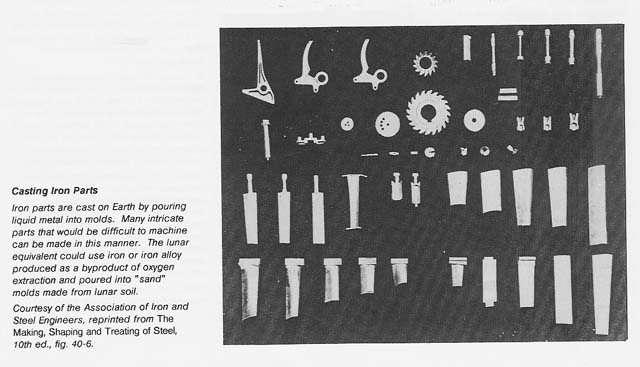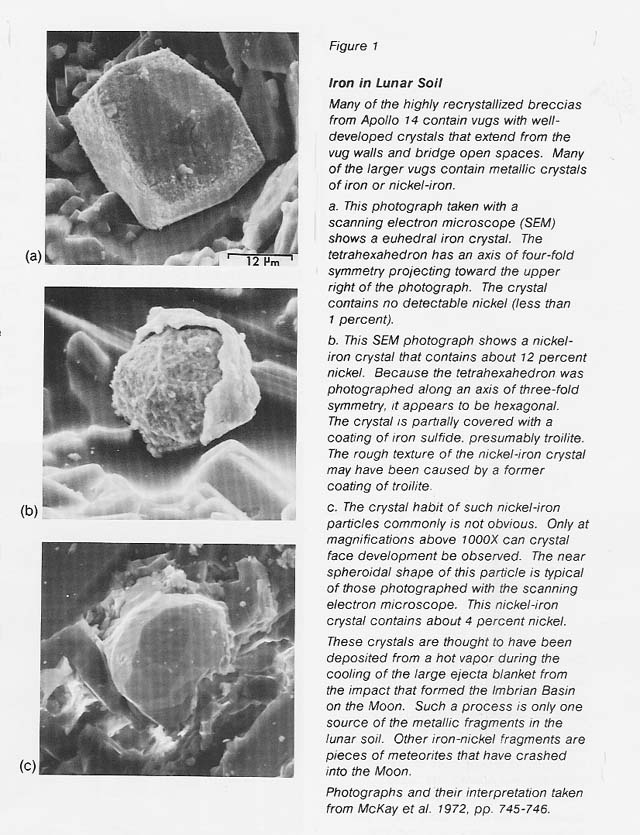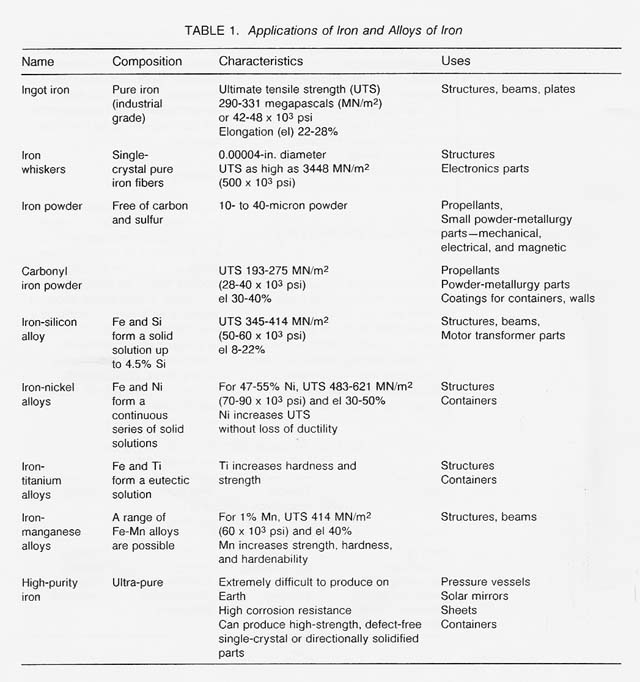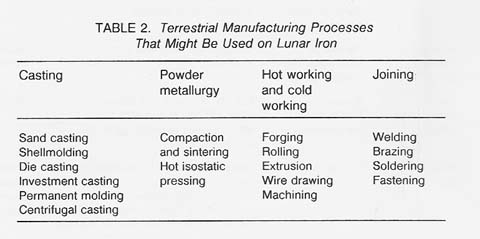
Iron and Alloys of Iron
Sankar Sastri
All lunar sQil contains iron in the metallic form, mostly as an iron- nickel alloy in concentrations of a few tenths of 1 percent (Nozette 1983). See figure 1. Some of this free iron can easily be separated by magnetic means (Shedlovsky et al. 1970; Goldstein, Axon, and Yen 1972). It is estimated that the magnetic separation of 100 000 tons of lunar soil would yield 150-200 tons of iron. Agglutinates (glass-bonded aggregates of soil fragments) contain metallic iron which could be extracted by melting and made into powder-metallurgy products (Romig and Goldstein 1976, Criswell 1981). However, agglutinate metal is so finely dispersed that it may be difficult or impossible to separate.

The basalts in the lunar maria contain up to 17 percent chemically combined iron, primarily in ilmenite, olivine, and pyroxene. And ilmenite (FeTiO3) concentrations in lunar soil are of fairly high grade compared to deposits on Earth. A variety of extraction schemes have been proposed for recovering metallic iron from these silicates and oxides: electrolysis of molten lava (Lindstrom and Haskin 1979), a carbochlorination process (Rao et al. 1979), solar furnace evaporation (King 1982), a carbonyl process (Meinel 1985), a hydrofluoric acid leach process (Waldron 1985), and hydrogen reduction of ilmenite (Williams 1985). Even though considerable work is needed to evaluate and test these processes for feasibility in a lunar environment, the abundance of iron and its relative ease of separation suggest that metallic iron and its binary alloys may find wide application in large-scale space operations.
Characteristics and Potential Uses
Table 1 provides a list of the characteristics and potential uses of the pure iron and iron alloys which might be readily produced from lunar materials.


The simple alloys described in table 1 may be relatively straightforward products of lunar metallurgy. Little is known, however, of the composition of the metal phase that forms directly from each of the processes described above. Process technology needs to be defined to establish the feasibility of providing the alloys.
Processes for Working Iron
A list of terrestrial manufacturing processes that might be used on iron and iron alloys in a nonterrestrial facility is shown in table 2. Criswell (1980) evaluated 200 manufacturing techniques and found more than 40 of them appropriate for a near-term, evolutionary space manufacturing facility. We consider all of the processes given in table 2 to be plausible for early application; however, when evaluated using the ground rules of our exercise, the processes that I discuss after the table appear to be the most feasible.
